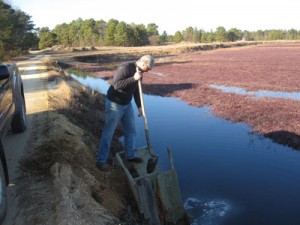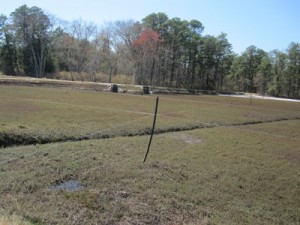The cranberry growing season lasts from April to November; the fruiting buds mature during the winter dormancy period. During the dormant season, severe winter weather could harm or even kill cranberry vines, which is why growers must take preventative measures to protect their crop. Under normal conditions, the temperature steadily drops post-harvest; it is important to wait until the vines go dormant before starting to put the water on. When vines go dormant, they turn burgundy in color:
Per the UMass Cranberry Station:
The signal to enter dormancy is most likely a combination of low temperatures and short days.
The dormant state lasts until the plant has been exposed to sufficient ‘chilling hours’ — hours of temperatures between 32ºF and 45ºF to complete the dormant cycle. In common with other perennial fruit crops, the cranberry plants must accumulate a critical number of chilling units in order to break dormancy in the spring and initiate flowering for the new season.
While we are waiting for the plants to complete this process so that we can begin the annual winter flood, our team is continuing to work on cleaning out interior ditches (better for drainage) and pest management (putting up swan string).
And, of course, we continue to work with our most important resource: our water supply.



